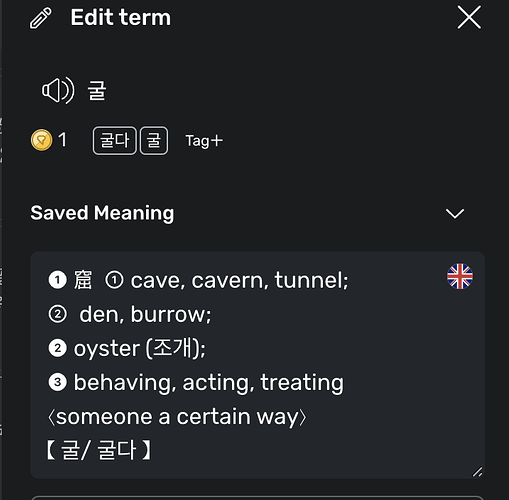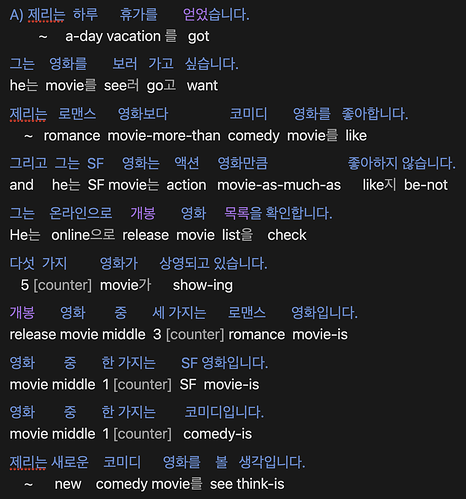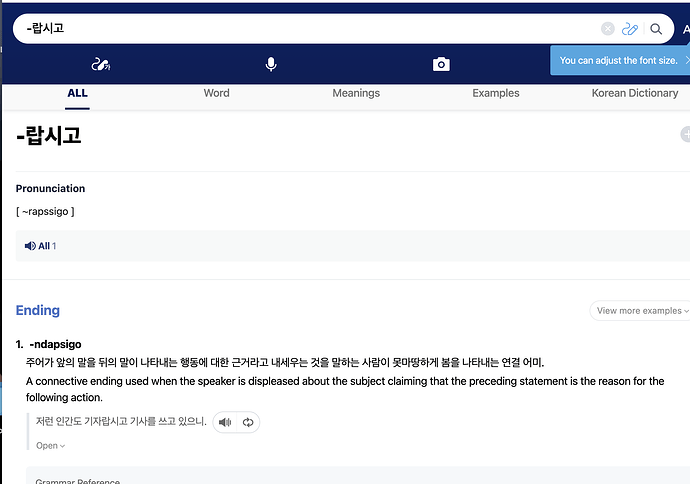I have been learning Korean since last September on my second attempt. I rate myself an A2 in reading and listening in Korean. The first one I made three years ago and failed, in which I learned up to 300ish words and gave it up. However, I attribute the difficulty of learning to a different writing system in Korean and a need for more solid motivation at the time. Nonetheless, as a beginner, transliteration is a distraction that interferes with the more natural acquisition of Hangul compared to simply listening and matching the pronunciation to the actual words in Korean IMP.
@Hagowingchun
Studying the word list with the shared word stems by the Chinese characters could be tiresome. The purpose of Chinese characters included at Krdict is for the learner to distinguish the different meanings of a particular word or words. These Chinese characters could have been represented by symbols or in another language, Pinyin, binary codes, etc.
Learning Chinese characters may only be necessary after the intermediate level, even though it’s more intuitive if someone has good knowledge beforehand. 동학 is a classmate in English. Most nouns in Korean have a secondary literal meaning besides simple translation, which applies to verbs as well since we can make some nouns in Korean into verb forms.
One of the literal meanings of 동 is “same”; I would be more inclined to associate it with con in contemporary or co in a coworker or colleague. Now, 동창 (attending or studying, a traditional way and still in use) under the same window as a classmate, 동학 studies together for a classmate, and 동료 officially holds a position at the same time for coworkers or colleagues is more understandable with knowing the literal and comparable meaning in English. We can deduce meanings for 동기 동+기(period) and 동시 동+시(time) with fair easiness.
We must remember that one of the literal meanings for 동 is associated with the definition above. We use it to at least notice the same component in the new words with the shared stem, and a direct association between the actual Korean expression and the literal meaning is better than with 同, tong, or con, co, or 1001 if someone does not have a good knowledge of that representation.
By the way, 원 means a member from another post you quoted aligns with the ending like -er, ee, an, ist, etc. Another way is to associate 원 with the stem “essence,” as in quintessence for a secondary meaning, as opposed to the given definition of a prefix used to mean original or raw. 원주민 aborigine, 원래 origin, and 원칙 rule; principle are a few examples related to this one.
It will be keen to discover the similarities of shared stems between Korean words and yet to distinguish differences when the circumstance does not apply.
이번에 한국에 와서 우리 영국 고딩들이 할 수 있는 여러 체험 중에 한국 학생으로서의 하루를 꼭 경험하게 해주고 싶었어요.
체험 and 경험 are similar but a little bit different in their usage.
카이는 만두는 만들어도 바느질은 못해요.
만 in 만두는 and 만들어도 share nothing in meaning. 만 has other meanings which can be used as a stem but not in the context from above.
I recommend implementing a function allowing Librarians to denote general stems in the context. It will be a great addition to have a recording of the learner’s speech compared with the audio in sentence mode.
![Learn Hangul in 90 Minutes - Start to Finish [Complete Series]](https://forum.lingq.com/uploads/default/original/3X/3/b/3b08d0760d972afb25f232f21f640687a8c3879d.jpeg)



